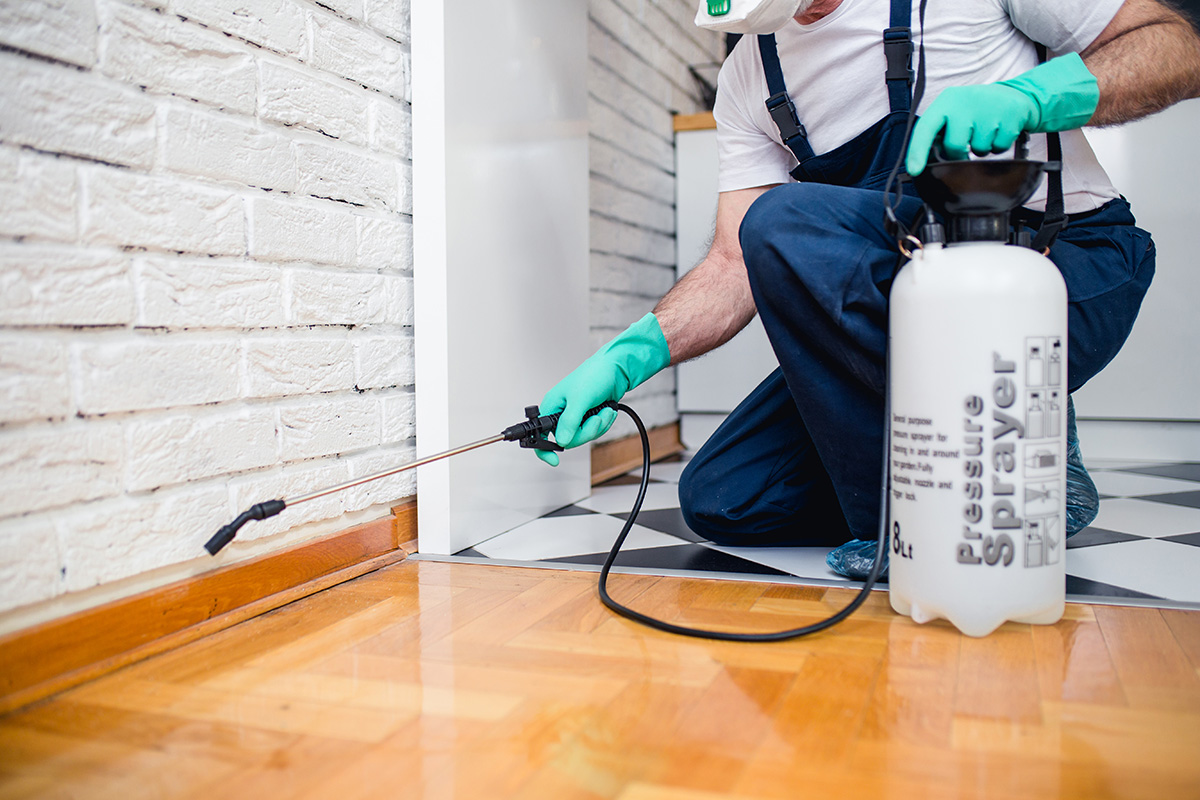A1 Pest Control Charlotte NC Bed Bugs - Expert Elimination Services
Wiki Article
Bed Pest Therapy Malfunction: Comparing Chemical Vs. Non-Chemical Solutions
In the realm of insect control, especially when managing the persistent issue of bed pests, the choice between chemical and non-chemical treatment remedies can be an essential one. Both techniques provide distinct advantages and downsides, influencing variables such as efficiency, security considerations, and total expense. By analyzing the nuanced information of each method, a more clear understanding of which course to pursue in resolving a bed bug infestation can be obtained.Effectiveness of Chemical Therapies
Chemical treatments for bed insect problems have been extensively recognized for their potent and rapid efficacy in eradicating these parasites. When taking into consideration the efficiency of chemical therapies, it is important to recognize that they can supply a thorough and quick solution to a bed insect trouble. Professional pest control specialists usually rely upon pesticides to target bed bugs at different phases of their life process, including grownups, fairies, and eggs. These chemicals normally function by interrupting the bed insects' nerve system, leading to paralysis and eventual death.In addition, chemical therapies have the benefit of supplying recurring results, suggesting that they can continue to eliminate bed bugs even after the initial application. This recurring activity is especially valuable in combating any type of possible re-infestations. In addition, the rapid action of chemical therapies can bring alleviation to individuals facing severe bed bug infestations, enabling them to reclaim control of their living areas rapidly.
Safety And Security Worry About Chemical Solutions
One critical facet that requires careful consideration when utilizing chemical services for bed bug treatment is making sure the safety and security of owners and the setting. Direct exposure to certain chemicals utilized in bed bug treatments can lead to respiratory concerns, skin inflammation, or other negative reactions, particularly in individuals with pre-existing problems or level of sensitivities.Moreover, the environmental influence of chemical remedies is one more considerable factor to consider. Some chemicals made use of in bed pest therapies may be damaging to useful bugs, wildlife, and communities if they leach into the dirt or water supply. It is vital to utilize chemical treatments sensibly, following safety and security guidelines, and considering much less harmful options to mitigate these risks and make sure the efficient and risk-free management of bed insect infestations.
Advantages of Non-Chemical Methods
Taking into consideration the prospective safety and security worries and ecological impact connected with chemical remedies for bed insect treatment, checking out non-chemical methods offers a promising choice with numerous distinct advantages. Non-chemical methods offer a much safer choice for families, specifically A1 charlotte pest control companies those with individuals, pets, or kids conscious rough chemicals. These techniques get rid of the risks of exposure to harmful compounds, decreasing the capacity for adverse health and wellness impacts. Moreover, non-chemical therapies are environmentally pleasant, as they do not add to air or water pollution, making them a lasting selection for parasite control.Furthermore, non-chemical remedies can be efficient in targeting bed insects, including hard-to-reach locations where chemical treatments might not penetrate - A1 bed bug exterminator charlotte. Methods such as warmth treatment, vacuuming, steam cleaning, and cushion coverings give comprehensive obliteration without the usage of harmful chemicals.
Limitations of Non-Chemical Treatments

In addition, non-chemical treatments commonly need multiple applications to attain effective eradication. This can be taxing and might not constantly guarantee full elimination of all bed insects and their eggs, especially in concealed or hard-to-reach places.
Furthermore, the success of non-chemical treatments greatly depends on correct implementation and thoroughness, which can be testing for individuals without specialist competence. Inadequate application of non-chemical approaches might result in insufficient eradication, causing relentless invasions and the need for added therapies.
Therefore, while non-chemical therapies have their benefits, it is important to recognize these constraints and consider them when determining the most efficient strategy for handling bed bug infestations.
Cost Contrast: Chemical Vs. Non-Chemical Options
Given the constraints linked with non-chemical treatments, an essential facet to assess in the context of bed pest management is the price comparison between chemical and non-chemical options. In contrast, non-chemical therapies like warm therapy or heavy steam can be extra costly, with expenses ranging from $1,000 to $6,000 for a whole home. While the initial price of chemical therapies might seem lower, several treatments might be required to fully eliminate the invasion, possibly increasing the overall expense.Verdict

Taking into consideration the possible safety and security concerns and ecological influence connected with chemical remedies for bed pest treatment, exploring non-chemical strategies provides an encouraging choice with several distinct benefits.Provided the constraints associated with non-chemical treatments, a necessary facet to examine in the context of bed insect management is the expense comparison in between chemical and non-chemical choices. In contrast, non-chemical therapies like heat treatment or heavy steam can be more pricey, with prices ranging from $1,000 to $6,000 for a whole home. While the first cost of chemical treatments might appear reduced, multiple therapies may be needed to totally eradicate the problem, possibly boosting the overall cost.In verdict, when contrasting chemical and non-chemical bed pest treatment alternatives, it is important to think about efficiency, security, advantages, constraints, and cost.
Report this wiki page